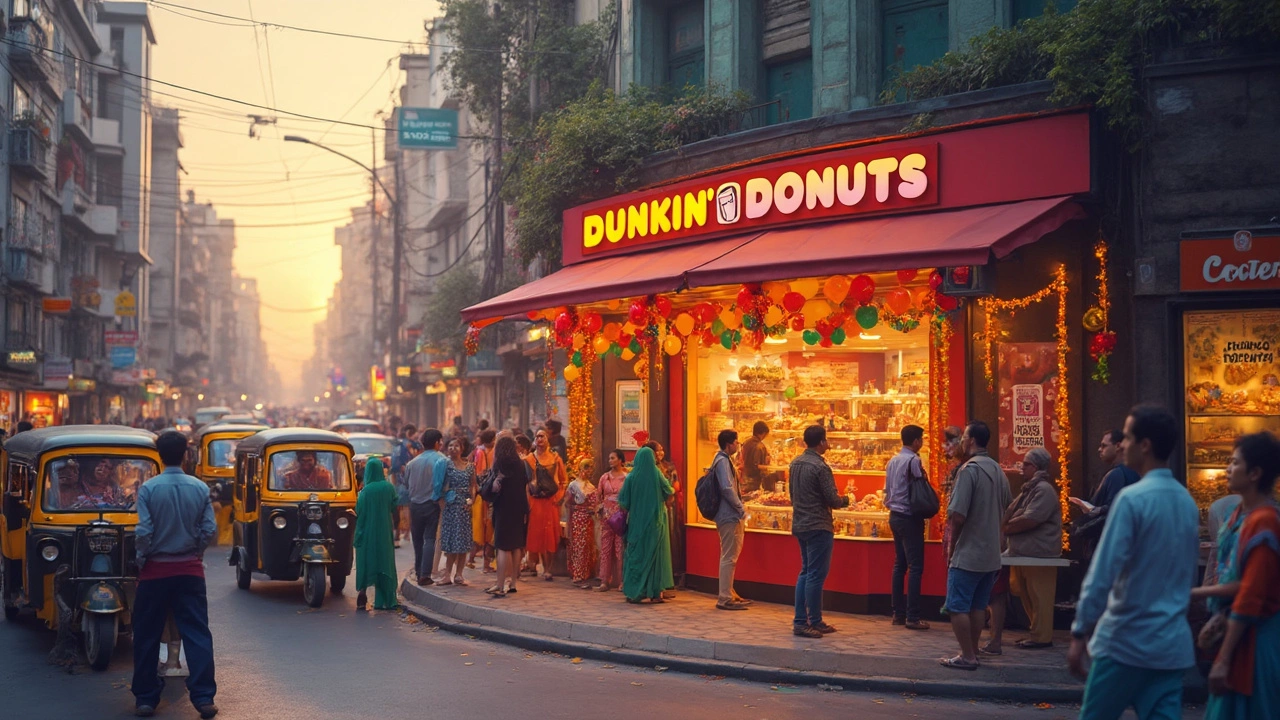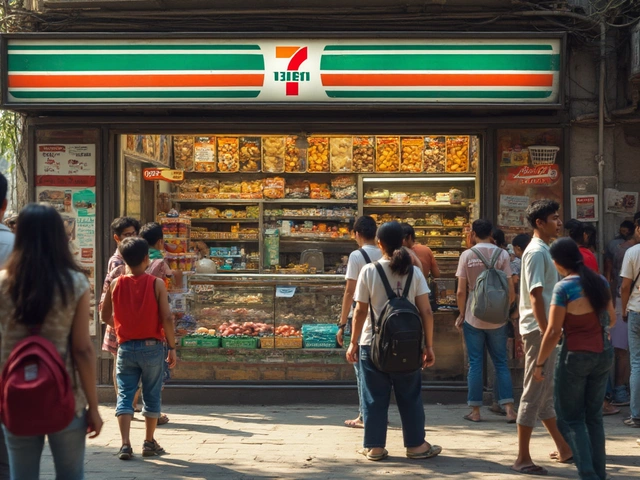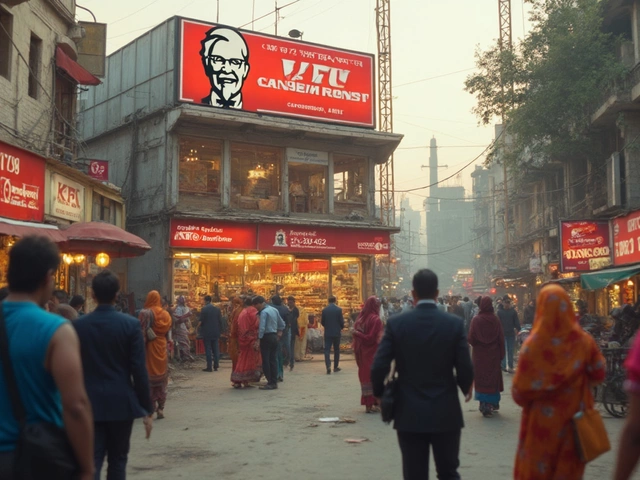Straight up: buying into a Dunkin Donuts franchise is no small play, especially in India. This isn’t a couple of lakhs and a handshake—think big numbers, strict rules, and a long checklist. But it’s easy to see why people line up for a shot. Dunkin's brand power and steady fan base mean you’re not exactly starting from scratch.
First thing people ask: “How much will I need?” You’ve got an initial franchise fee, real estate costs, fit-out expenses, and the cash buffer for day-to-day business. Spoiler: opening a Dunkin Donuts in India will set you back anywhere from ₹1.5 crore to ₹3.5 crore, depending on location, size, and city. That’s a rough range—there are plenty of details behind those numbers.
Besides the big price tag, there’s more to count than just your starting cash. Dunkin has their standards, and if your place doesn’t look and run like an international outlet, you won’t get past the first round. They want you to have skin in the game, local knowledge, and business smarts, not just deep pockets.
- Dunkin Donuts Franchise Fees and Investment
- What Do You Get for Your Money?
- Hidden Costs and Ongoing Expenses
- The Approval Process and What Dunkin Looks For
- Tips and Pitfalls for Indian Franchisees
Dunkin Donuts Franchise Fees and Investment
Let’s get down to the numbers. Grabbing a Dunkin Donuts franchise in India isn’t cheap, but it spells big business if you play it smart. To start, the franchise fee sits around ₹35–50 lakh. That’s just the entry ticket. This fee gives you the legal right to use the brand, proven systems, and training support, but you’re far from finished.
Everything adds up fast—think property lease or purchase, fit-out and interiors, kitchen equipment, tech systems, and initial stock. Most franchisees are looking at an all-in investment of ₹1.5 crore on the low end, stretching up to ₹3.5 crore in a busy metro or a big mall. Renting in a high-traffic shopping center will push costs higher; a standalone spot in a smaller city might save you lakhs, but you’ll probably see a quieter cash register, too.
Here’s a breakdown to help you make sense of where the money goes:
| Expense Type | Estimated Cost (Lakhs ₹) |
|---|---|
| Franchise Fee | 35–50 |
| Interiors & Fit-Out | 60–100 |
| Kitchen Equipment | 30–50 |
| Initial Stock & Ingredients | 10–15 |
| Other Setup (signage, furniture, IT) | 15–30 |
| Working Capital | 10–25 |
The numbers above are averages—your mileage may vary based on city, store format (full restaurant vs. express counter), and even the landlord’s mood on rent negotiations.
One weird twist for Dunkin Donuts India: the company almost always prefers multi-unit operators, not just one-off stores. So sometimes, you’ll be expected to commit to multiple stores over a set number of years, cranking up total investment fast.
Don’t forget one more key detail—on top of recurring royalties (6% of sales) and brand-advertising fees (about 2-3%), you’ve got strict guidelines on product sourcing and branding, giving you less freedom on costs compared to small local brands. You really need to run the math to be sure the investment makes sense for your city, budget, and risk tolerance.
What Do You Get for Your Money?
When you put up the money for a Dunkin Donuts franchise in India, you’re not just buying some coffee machines and a neon sign. The franchise package is stacked with things you actually need to get running and pull in customers—plus the stuff needed to keep everything up to Dunkin's standards.
Here's what you’re really paying for:
- Franchise Rights: The right to use the Dunkin Donuts India brand, menu, and systems. This gives you instant recognition and trust from customers who already know what to expect.
- Training: You and your core team get trained by the experts—usually a few weeks of intense, hands-on learning. This covers how to run the outlet, follow recipes, use equipment, and hit those quality checks Dunkin demands.
- Store Design and Fit-Out: Dunkin gives you the playbook for how everything should look: counters, seating, kitchen, colors, and signage. You’ll use approved architects and suppliers, so no cutting corners here.
- Operations Manual: Think of this as the franchise bible. From managing daily sales to handling waste, the manual spells out every step so you can stay consistent—and avoid messy mistakes.
- Marketing Support: Dunkin does national-level advertising. Locally, they’ll guide you on launches, offers, and social media campaigns. Sometimes, you’ll get marketing material for free; other times, you’ll pay a little extra for custom stuff.
- Raw Materials and Suppliers: You get linked with trusted suppliers for all key ingredients. Some stuff—like the signature coffee blend or donuts mix—will only come from authorized vendors, so you keep the same taste as anywhere in the world.
Here’s a quick look at what a typical initial investment breakdown can look like in rupees (actual amounts vary by location):
| Category | Cost (INR) |
|---|---|
| Franchise Fee | 25-60 lakh |
| Store Setup & Interiors | 80 lakh - 1.8 crore |
| Equipment | 20-40 lakh |
| Initial Inventory | 10-15 lakh |
| Training & Pre-Opening | 5-10 lakh |
| Marketing Launch | 3-7 lakh |
On top of everything, you get ongoing support from Dunkin’s India team. If something breaks, if sales dip, or if you just need to tweak your strategy, the franchise crew has your back. Bottom line: you’re buying into a tried-and-tested brand, a proven playbook, and a support system that actually cares if you succeed.
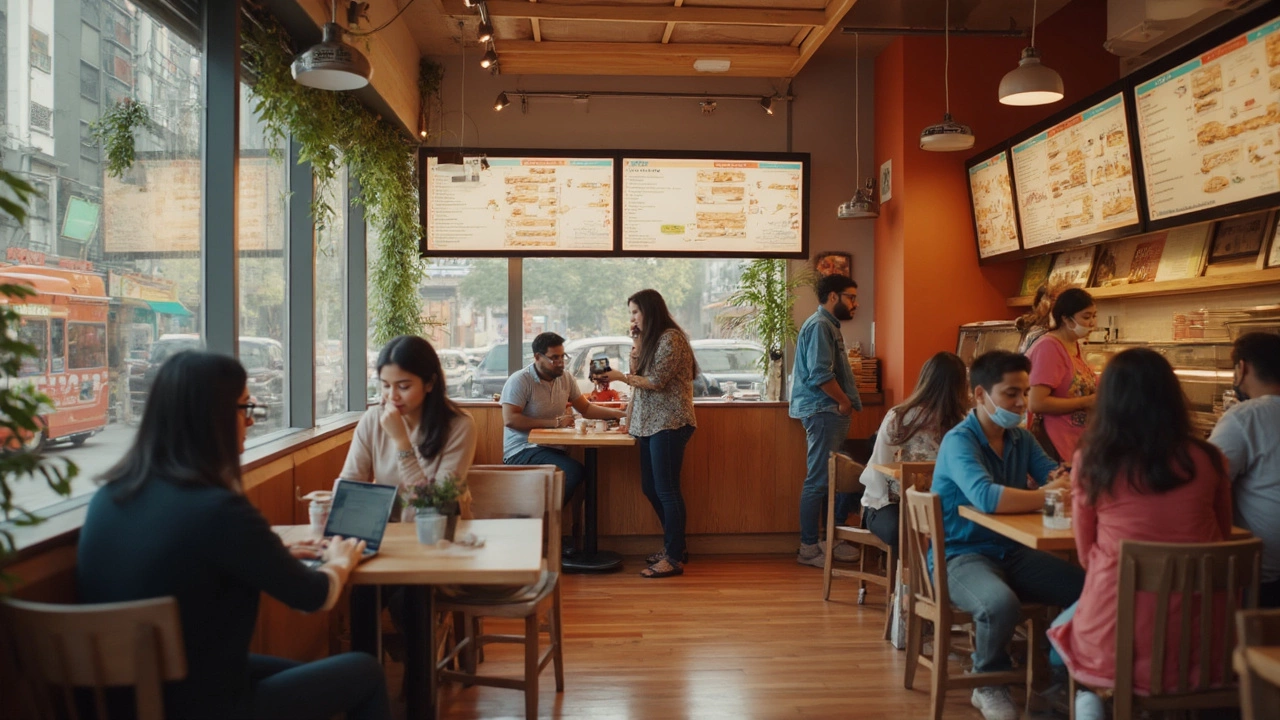
Hidden Costs and Ongoing Expenses
If you think the Dunkin Donuts franchise price tag stops at the setup, there’s more coming. Most newbies focus on the big, upfront checks but forget there are plenty of costs that quietly eat into your profits month by month.
First, there’s the royalty fee. Dunkin charges ongoing royalties, usually around 6% of your gross sales. This isn’t optional—no matter how well or badly your shop is doing, Dunkin gets their piece. Plus, there’s the national advertising fee, which is typically another 2-5% of sales in India. That covers things like national ads and promotions, but doesn’t cover local marketing, which you’ll often pay separately.
Rent is another biggie. In a prime city spot, renting a spot that matches Dunkin’s size and brand image won’t come cheap. Most landlords want security deposits upfront, and those get locked up for years.
Then you’ve got training costs, staff salaries, and constant stock orders. Supplies—like coffee beans, doughnut mixes, branded packaging—must come from approved vendors. They’re not always the cheapest, but Dunkin wants quality control. Don’t forget annual store maintenance and occasional upgrades. If corporate says, “Time for a new look,” you’re footing the bill.
Utility bills pile up fast, especially with AC running all day and ovens on non-stop. Some months, electricity and water alone can shock you. Technology fees for the point-of-sale system, plus accounting and legal help, round out the stack.
- Royalty fee: ~6% of gross sales
- Advertising fee: 2-5% of gross sales
- Rent and deposits: Highly variable by city
- Employee training and salaries
- Supplies from approved vendors
- Store maintenance and periodic upgrades
- Utilities (electricity, water, internet)
- Technology and POS system fees
- Legal and accounting expenses
Here’s a quick look at some typical ongoing monthly expenses for a Dunkin Donuts India outlet:
| Expense | Estimated Monthly Cost (INR) |
|---|---|
| Royalties & Ads | 80,000 - 1,60,000 |
| Rent | 1,00,000 - 3,00,000 |
| Staff Salaries | 1,50,000 - 2,50,000 |
| Supplies | 1,00,000 - 2,00,000 |
| Utilities | 35,000 - 60,000 |
| Maintenance | 20,000 - 40,000 |
Add everything up, and you’re looking at fixed outflows north of ₹5 lakhs per month for a medium-sized store. So when you’re running the numbers for your Dunkin Donuts India business plan, don’t just count the crores it takes to open—track the lakhs it takes just to keep the doors open. Miss this part, and you could be shocked by your first balance sheet.
The Approval Process and What Dunkin Looks For
Getting that green light on a Dunkin Donuts franchise in India isn’t just about slapping down cash. Dunkin is picky, and for good reason. They want partners who can protect the brand and keep customers coming back. Here’s how their approval process usually shakes out:
- Application: You fill out a detailed application where you talk about your finances, experience, and why you picked Dunkin Donuts India.
- Background Checks: They’ll dig into your business record and financial background. If you’ve got failed ventures or patchy money trails, expect questions.
- Capability Interview: Dunkin wants to know you can handle a real business, not just make coffee. Owning or managing another restaurant or café helps a lot here.
- Location Review: You’ll need to suggest possible locations. Malls and high-traffic areas are your best bet. They will visit and judge if the spot matches their needs.
- Financial Proof: Prepare your paperwork. Dunkin expects you to show you really have ₹1.5-₹3.5 crore for investment plus extra working capital. They want banks statements, assets, and loan info if you have any.
- Business Plan: You’ll pitch your plan—including how you’ll staff, what local tweaks might work, and how you’ll push the brand.
If all goes well, you get invited to headquarters for final approval and training. This process can take several months—you’ll need patience, polish, and a rock-solid plan.
Dunkin is clear on what matters most when they pick new owners for franchise opportunities in India:
- Enough cash (no scraping together loans last minute)
- Experience running a team, especially in food/retail
- Understanding local consumers (city knowledge is big)
- A location with real potential
- Commitment—they want folks ready to hustle, not just investors looking to sit back
Here’s a quick look at some actual stats from recent applicants in metro cities:
| Step | Typical Approval Rate |
|---|---|
| Background Check | 75% |
| Capability Interview | 60% |
| Location Approval | 40% |
| Final Selection | 10%-15% |
The odds aren’t always in your favor, but if you come in with experience, strong capital, and a good spot, you’ll stand out. Nail the approvals, and you’re on your way to joining the Dunkin Donuts franchise family in India.
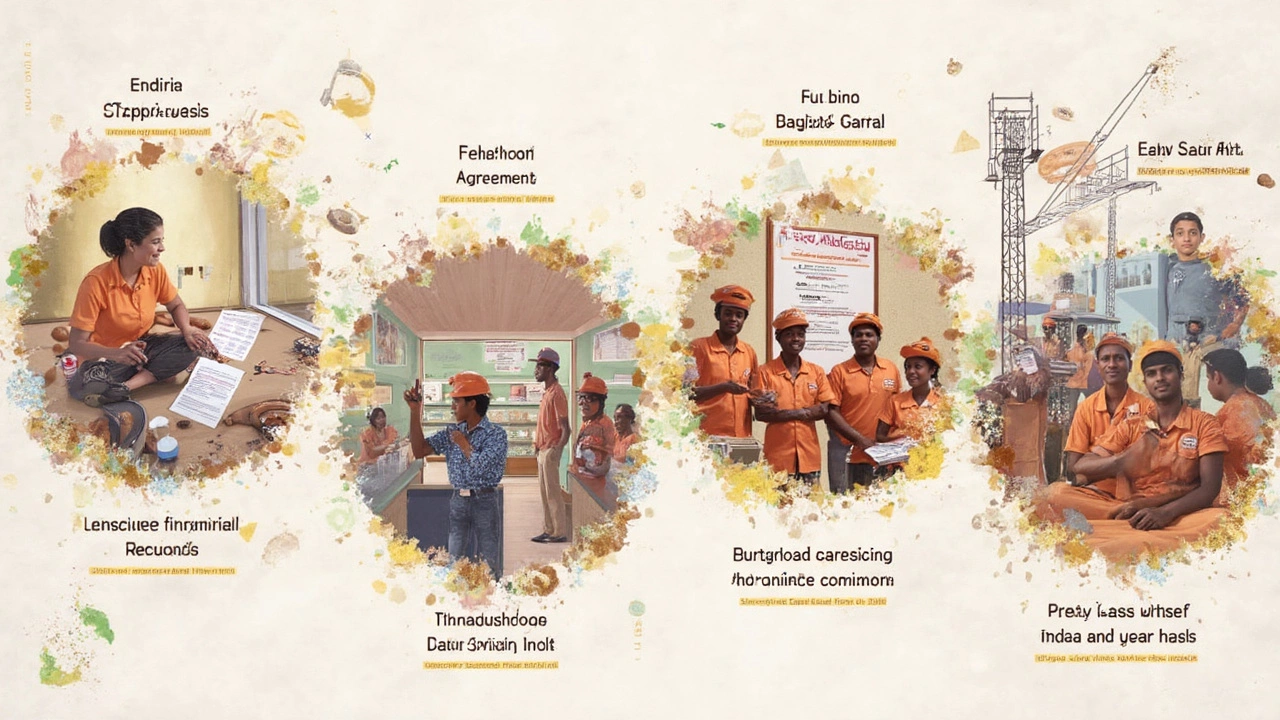
Tips and Pitfalls for Indian Franchisees
If you’re gunning for a Dunkin Donuts franchise in India, knowing the ups and downs saves you headaches and money. It’s easy to see the brand, imagine crowds, and rush in, but there are some real-life lessons you shouldn’t ignore.
Location is the biggest game-changer. City malls, airports, or busy junctions usually work best—these are where Dunkin’s shops in India pull in the most traffic. But rent in these prime spots doesn’t come cheap. A spot in Delhi or Mumbai’s heart can eat up a chunk of your initial investment every month. Don’t settle for quiet neighborhoods because the rent is low; Dunkin’s brand counts on high footfall.
Keep a close eye on ongoing costs. People focus on setup, but costs like royalty fees (usually 6-8% of your sales), advertising contributions, staff salaries, and supply chain hiccups won’t let up. You’ll need to pay a monthly marketing fee—Dunkin expects franchisees in India to contribute around 2–5% of their gross sales to national or local advertising funds.
| Item | Typical Monthly Expense (INR) |
|---|---|
| Royalty Fee | 1,50,000+ |
| Local Marketing | 60,000–1,20,000 |
| Staff Wages | 3,00,000+ |
| Rent (Prime Location) | 4,00,000–8,00,000 |
Don’t ignore local tastes. Dunkin’s classic menu is a draw, but Indians have strong opinions about flavor and options. Dunkin Donuts India has already adapted—think masala chai, mango donuts, and spicy sandwiches. Stay flexible and open to feedback, or you’ll lose repeat customers fast.
Be careful with hiring and training. Many franchises stumble because they don’t invest time in building a reliable, well-trained crew. Dunkin’s model expects fast service and consistent quality. Good people cost more, but cutting corners here is a recipe for complaints and high staff turnover.
Here’s what experienced owners say are the biggest pitfalls to avoid:
- Underestimating how much working capital you’ll need for at least the first 12–18 months.
- Picking a poor location just to save on rent.
- Not following the Dunkin Donuts India support and training programs—these guys know what works in this market.
- Skipping on local menu tweaks, or ignoring customer feedback.
- Trying to micromanage everything yourself—franchises run best when you trust your managers and train them well.
The franchise cost India numbers might look intimidating, but if you go in prepared, listen to what the brand teaches, handle your people right, and keep an eye on those running costs, the returns can definitely add up. Owning a Dunkin outlet in India isn’t a get-rich-quick scheme, but it’s a real shot for those who treat it seriously.
